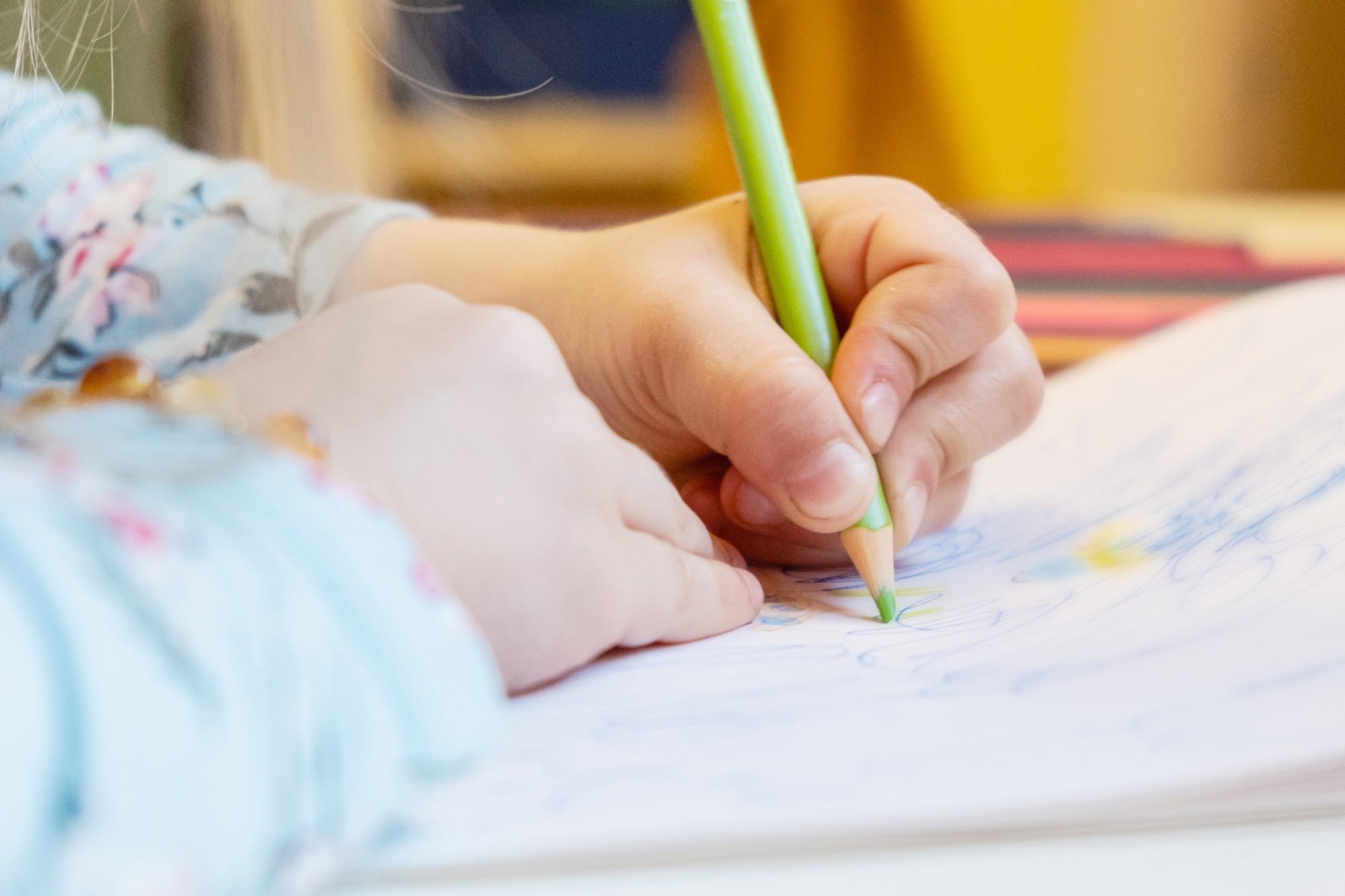 Thought LeadersSusan MagsamenFounder & Director, The International Arts + Mind LabJohns Hopkins University School of Medicine
Thought LeadersSusan MagsamenFounder & Director, The International Arts + Mind LabJohns Hopkins University School of MedicineNewsMedical spoke with Susan Magsamen, Executive Director of the International Arts + Mind Lab at Johns Hopkins University. In this interview conducted at SfN 2024, Susan shares insights into her groundbreaking work in neuroaesthetics, discussing how the arts can measurably influence brain function and well-being, while also highlighting the transformative potential of arts-based interventions in healthcare, education, and community development.
Can you start by introducing yourself and sharing what first drew you to the intersection of neuroscience and the arts?
My name is Susan Magsamen, and I’m the Executive Director of the International Arts and Mind Lab, Center for Applied Neuroaesthetics at Johns Hopkins University School of Medicine. I’m also the co-director of the NeuroArts Blueprint and co-author of Your Brain on Art: How the Arts Transform Us. For me, this work has been a lifelong journey. I grew up in a creative household where we made things like knitting, cooking, writing, and poetry.
When I was 12, my twin sister had a traumatic accident and couldn’t connect to her body or emotions. My mom suggested she start drawing, and I saw how art helped her process what she couldn’t express in words. That experience led me to realize the deep power of creative expression, which shaped my career. Since then, I’ve worked at the intersection of arts, culture, and science—developing companies focused on arts-based learning for children, working in technology and arts, and eventually collaborating with Johns Hopkins to explore arts in health.
 Image Credit: Galina-Photo/Shutterstock.com
Image Credit: Galina-Photo/Shutterstock.com
Your talk at SfN 2024 explored neuroaesthetics, the science of how the arts change the brain and body. Could you give us an overview of the key ways in which artistic experiences impact brain function and well-being?
Neuroaesthetics is the science of how the arts and aesthetics measurably change the brain, body, and behavior. What’s important is that it’s a translational field, meaning artists and scientists collaborate, and it works bidirectionally—artists inform researchers and vice versa. There are many examples of how the arts impact health and well-being. In healthcare, we know that virtual reality and dance are being used to manage chronic pain.
Dance also helps people with Parkinson’s improve gait, mood, and even sleep. Singing with Alzheimer’s patients reduces agitation and enhances quality of life, and we’re even seeing economic savings as these interventions reduce the burden on caregivers.
In mental health, different art forms help lower cortisol levels, reducing stress and improving cognitive load, which is critical when the brain’s emotional centers are in overdrive. In education, we know that engaging in the arts helps students make better decisions, stay in school longer, and even delay early pregnancies. Studies show the arts can physically change the brain, increasing cerebral cortex size and improving resilience through stronger neural pathways.
Your recent book Your Brain on Art delves into how the arts can transform us. Could you share an example of how engaging with art has been shown to improve physical or mental health in measurable ways?
In Your Brain on Art, we aimed to validate people’s intuitive sense that the arts have a profound impact on health. One myth we dispelled is that you need to be good at the arts to benefit from them—that’s not true. Just 20 minutes a day of artistic engagement can help return the body to homeostasis. One specific example in the book is a study on music and postpartum depression.
Mothers singing to their babies in Scandinavia saw significant reductions in depression, which led to a decrease in the use of antidepressants. It also improved bonding and oxytocin release, which benefited both maternal health and recovery. What’s powerful is that these findings help us understand why the arts work, similar to how we now understand the science behind exercise, sleep, and nutrition.
The concept of “Impact Thinking” is central to your work. How does this model help accelerate the practical application of arts-based approaches to solve real-world challenges in health, learning, and community development?
Impact Thinking is crucial because it integrates multiple ways of knowing—scientific, artistic, indigenous, and lived experience. This model is about applying arts-based approaches to solve specific problems in real-world contexts, from healthcare to education to community development. It’s a nine-step process designed to take research from theory to application.
We start by identifying a problem, like chronic pain or trauma recovery, and then bring together different methodologies—whether it’s qualitative research, brain imaging, or biometrics—to gather insights. From there, we develop solutions that can be scaled and evaluated for impact. For example, a multi-country study found that mothers singing to their babies reduces postpartum depression, and this knowledge was disseminated and scaled to benefit many more communities. The model is solution-focused, aiming for long-term, scalable change across sectors like health, education, and social well-being.
 Image Credit: antoniodiaz/Shutterstock.com
Image Credit: antoniodiaz/Shutterstock.com
You’ve been involved in the NeuroArts Blueprint project, a partnership between Johns Hopkins and the Aspen Institute. How do collaborations like these help advance the field of neuroaesthetics and its impact on society?
The NeuroArts Blueprint is an ambitious plan designed to build the field of neuroaesthetics into something sustainable and impactful. It was inspired by successful efforts to build fields like bioethics, climate change, and aging. We’ve identified five key recommendations: expanding the research base, supporting practitioners, developing education and career pathways, advocating for policy and funding, and building leadership and communication capacity.
We’re already implementing these through initiatives like the NeuroArts Resource Center, a virtual hub launching soon where people from around the world can collaborate. We also established the Renee Fleming Investigator Award to support early-career interdisciplinary teams working on arts and health. Our goal is to make the arts and aesthetics a core part of medicine and public health, influencing physical and mental health, learning, and community well-being on a global scale.
How do you envision neuroaesthetics playing a role in addressing broader societal issues, such as public health, education, and community well-being?
I believe neuroaesthetics will become part of mainstream medicine and public health. For example, the arts can be a powerful tool in trauma recovery, refugee resettlement, and community healing. In education, incorporating the arts helps improve learning outcomes and fosters social-emotional development.
In healthcare, using the arts for rehabilitation and mental health is becoming increasingly recognized. Even in the justice system, the arts have the potential to play a major role in rehabilitation. Neuroaesthetics can address issues like stress, anxiety, and loneliness—problems that are pervasive in modern society. As we continue to research and scale these practices, we’ll see their impact expand to help individuals and communities thrive.
As the field of neuroaesthetics grows, what future trends or innovations do you believe will have the greatest impact on how we understand and harness the power of the arts for human development?
There are several exciting trends on the horizon. One is the ability to non-invasively study the brain through advanced tools developed by the NIH’s BRAIN Initiative.
Another key area is prevention—using the arts to enhance childhood development by building stronger neural pathways and social-emotional skills. This gives children lifelong tools for resilience. We also know that engaging with the arts in midlife can improve cognitive health and extend life expectancy. Finally, arts-based interventions are affordable, accessible, and immediately impactful, making them a valuable tool for addressing widespread issues like stress, anxiety, and depression.
I believe that as we deepen our understanding of the arts’ effects on the brain, we’ll start to see cures for diseases and major improvements in public health outcomes.
Looking ahead, what are your hopes for how neuroaesthetics will continue to evolve and shape the way we think about health, education, and community in the future?
My hope is that neuroaesthetics will be as essential to daily life as exercise or nutrition. The arts are wired into our biology, and we can use them to improve health, learning, and well-being.
By integrating the arts into medicine, public health, education, and community development, we can address major challenges like trauma, stress, and cognitive decline. I see neuroaesthetics as a transformative force that can shape a healthier, more connected society, enhancing human potential in ways we’re only beginning to understand.
Where can readers find more information?
About Susan Magsamen
 Susan Magsamen is the founder and executive director of the International Arts + Mind Lab (IAM Lab), Center for Applied Neuroaesthetics, a pioneering initiative from the Pedersen Brain Science Institute at Johns Hopkins University School of Medicine. Her body of work lies at the intersection of brain sciences and the arts—and how our unique response to aesthetic experiences can amplify human potential.
Susan Magsamen is the founder and executive director of the International Arts + Mind Lab (IAM Lab), Center for Applied Neuroaesthetics, a pioneering initiative from the Pedersen Brain Science Institute at Johns Hopkins University School of Medicine. Her body of work lies at the intersection of brain sciences and the arts—and how our unique response to aesthetic experiences can amplify human potential.
Magsamen is the author of the Impact Thinking model, an evidence-based research approach to accelerate how we use the arts to solve problems in health, well-being, and learning. In addition to her role at IAM Lab, she is an assistant professor of neurology at Johns Hopkins and serves as co-director of the NeuroArts Blueprint project in partnership with the Aspen Institute.
Prior to founding IAM Lab, Magsamen worked in both the private and public sector, developing social impact programs and products addressing all stages of life—from early childhood to the senior years. Magsamen created Curiosityville, an online personalized learning world, acquired by Houghton Mifflin Harcourt in 2014 and Curiosity Kits, a hands-on multi-sensory company, acquired by Torstar in 1995.
An award-winning author, Magsamen has published eight books including The Classic Treasury of Childhood Wonder, The 10 Best of Everything Families, and Family Stories.
Susan’s newest book, a New York Times Bestseller, is titled Your Brain On Art: How the Arts Transform Us written with Ivy Ross, Vice President of Google Hardware. It is a journey through the science of neuroaesthetics that offers proof of how our brains and bodies are transformed when we participate in the arts and aesthetic experiences, and how this knowledge can improve our physical and mental health, help us learn and flourish, and build stronger communities.
Magsamen is a Fellow at the Royal Society of the Arts and a strategic advisor to several innovative organizations and initiatives, including the Academy of Neuroscience for Architecture, the American Psychological Association, the National Association for the Education of Young Children, Brain Futures, Learning Landscapes, and Creating Healthy Communities: Arts + Public Health in America.
This article was originally published on news-medical
